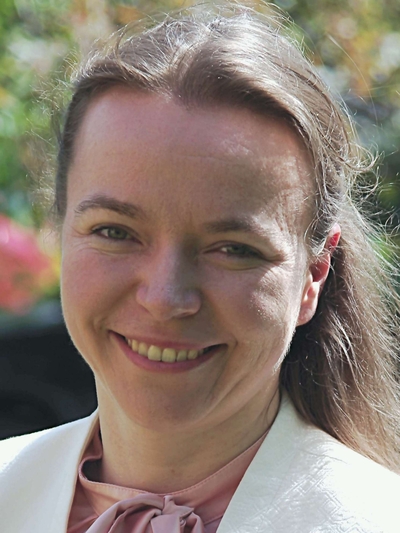Halophilic archaeons are a group of microorganisms that are distinguished by their ability to live in extreme environments. The highly saline environment that is found in salt lakes, seas and also salt mines is one of such environments. In 2016, scientists from the Faculty of Biology and Environmental Protection at the University of Lodz, in cooperation with researchers from the University of Coimbra in Portugal, discovered a new species of halophilic archaeon (Latin. Halorhabdus rudnickae).
 Dr hab. Magdalena Kowalewicz-Kulbat
Dr hab. Magdalena Kowalewicz-Kulbat
We discovered and described a new species that was isolated from the Barycz post-mining deposit belonging to the “Wieliczka” Salt Mine. We were very happy because this has been the first new species of halophilic archaeons discovered in Poland
– says Dr hab. Magdalena Kowalewicz-Kulbat from the Department of Immunology and Infectious Biology, Faculty of Biology and Environmental Protection at the University of Lodz.
This discovery has inspired the ongoing research in the context of the interaction of this microorganism with the host immune cells. – I am a microbiologist and immunologist, and I have been conducting research on host cell interactions with various types of microorganisms for years – admits Dr hab. Magdalena Kowalewicz- Kulbat, – Together with mgr Krzysztof Krawczyk, a doctoral student, we acquired a research project and succeeded in demonstrating for the first time that immune cells respond to stimulation by halophilic archaeons. What's more, this stimulating potential implies a possibly important role for these microorganisms in halotherapy.
Salt mines are places that provide ideal conditions for an alternative therapy such as halotherapy, which has been used in respiratory rehabilitation for many years, especially in Eastern European countries.
Thanks to the salt mines’ specific microclimate, which consists of salt aerosol, appropriate humidity and temperature, patients with cystic fibrosis, allergic diseases as well as patients undergoing post Covid rehabilitation actually feel better and their respiratory parameters improve under the influence of halotherapy. And here the question arises as to whether this is solely due to the specific microclimate or perhaps the halophilic archaeons present in the mines also play a part in this rehabilitation
– wonders Dr hab. Kowalewicz-Kulbat.
The researchers have been conducting studies aimed at isolating and characterising halophilic microorganisms found in salt mines since a few years. Now they are also trying to determine the role of these microorganisms interacting with immune cells. – This will result in the better understanding of the halotherapy mechanism in the future. So far, we know that this form of therapy works, it is just not entirely clear how – says Dr hab. Magdalena Kowalewicz-Kulbat. – In the research conducted so far, we have used the H. rudnickae strain discovered in 2016, but additionally, another strain of halophilic archaeons – Natrinema salaciae isolated from the Mediterranean Sea. This way, we wanted to test whether the immune response to halophilic archaeons is species-specific, or whether it will be a feature common to this group of microorganisms.
Research is being conducted in an in vitro model using dendritic cells. – These cells play an extremely important role in the immune system, as they are professional antigen-presenting cells – explains Dr hab. Kowalewicz-Kulbat. – They owe the term 'professional' due to their outstanding ability to stimulate naive T lymphocytes. Thus, we are trying to see how halophilic archaeons are presented by dendritic cells to T lymphocytes in a structure called the immune synapse and what type of immune response will be induced.
The researchers are planning a study to determine the importance of halophilic archaeons as immunomodulators capable of rebalancing the immune system of patients with allergic and other respiratory diseases.
No one before us has studied this, probably because culturing halophilic archaeons under laboratory conditions is not easy – she admits. Thanks to the cooperation with the Portuguese research group, we have gained the techniques thanks to which we are now carrying out such methods in Poland. Our research is also unique because of its multidisciplinary nature, as it combines elements of not only microbiological and immunological, but also geological knowledge. We are currently collaborating with the Bochnia Salt Mine. We learn a lot from one another; it is a cooperation in which microbiologists, immunologists, geologists work together to elucidate the mechanisms and factors responsible for the pro-health conditions in the salt chambers. We hope that this research will result in the better understanding of halophilic archaeons and their importance as immunomodulators of immune processes occurring in patients with respiratory diseases.
– adds Dr hab. Kowalewicz-Kulbat.
